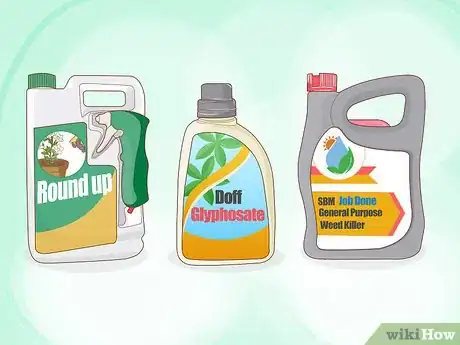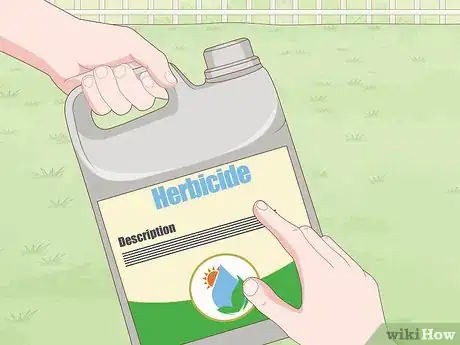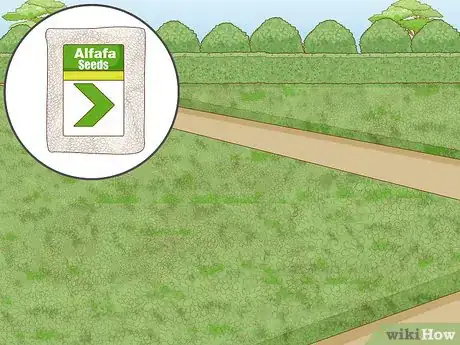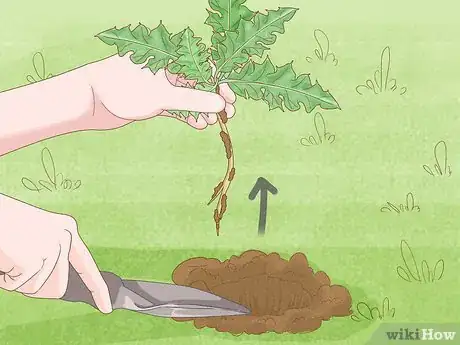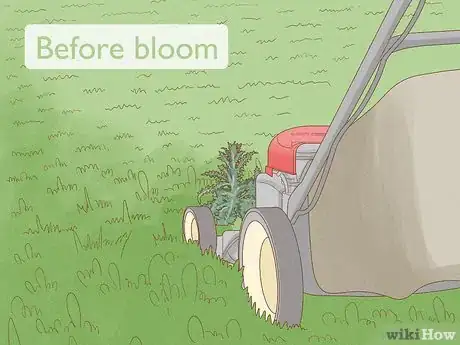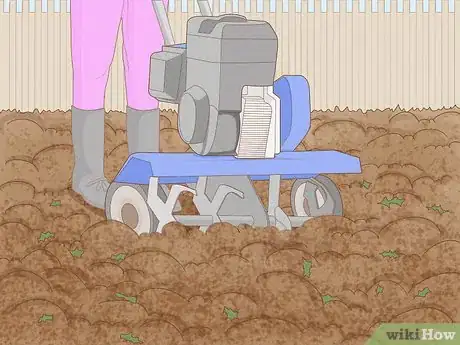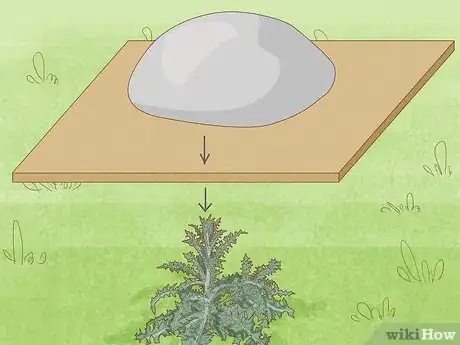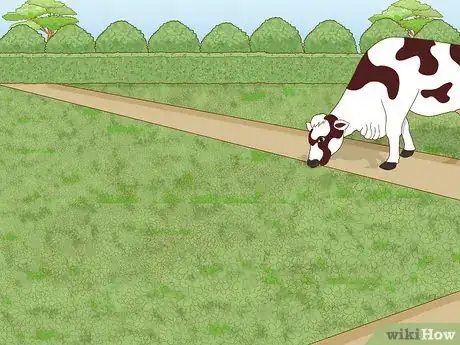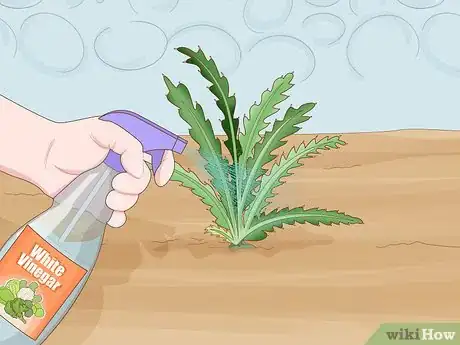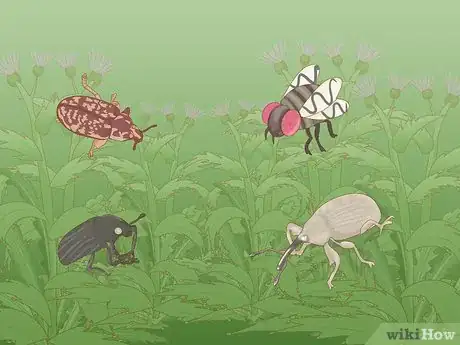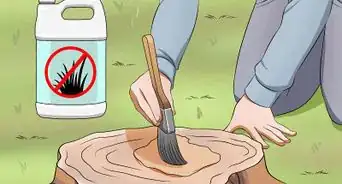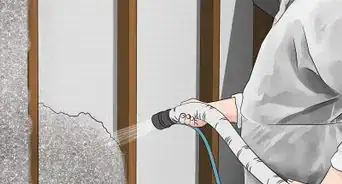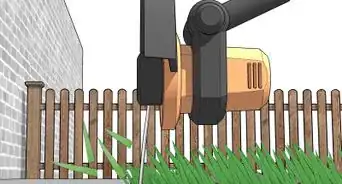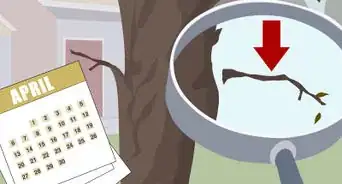This article was co-authored by Ben Barkan and by wikiHow staff writer, Eric McClure. Ben Barkan is a Garden and Landscape Designer and the Owner and Founder of HomeHarvest LLC, an edible landscapes and construction business based in Boston, Massachusetts. Ben has over 12 years of experience working with organic gardening and specializes in designing and building beautiful landscapes with custom construction and creative plant integration. He is a Certified Permaculture Designer, is licensed Construction Supervisor in Massachusetts, and is a Licensed Home Improvement Contractor. He holds an associates degree in Sustainable Agriculture from the University of Massachusetts Amherst.
There are 14 references cited in this article, which can be found at the bottom of the page.
wikiHow marks an article as reader-approved once it receives enough positive feedback. This article received 14 testimonials and 100% of readers who voted found it helpful, earning it our reader-approved status.
This article has been viewed 425,961 times.
Thistles are one of the most stubborn weeds out there. They’re so invasive and obnoxious that it’s even illegal in some places to not remove them.[1] They can be really tricky to kill, but you can definitely get rid of them if you’re persistent. It will likely take you 2 or 3 growing seasons to completely remove them, but don’t get discouraged.
Here are 10 effective ways you can get rid of even the most stubborn thistles.
Steps
Expert Q&A
Did you know you can get premium answers for this article?
Unlock premium answers by supporting wikiHow
-
QuestionHow can I kill thistles naturally?
 Tyler RadfordTyler Radford is a Plant Specialist at Hollie’s Farm & Garden in Tampa, Florida. With over nine years of experience, Tyler specializes in gardening, planting, mulching, and potting. Hollie’s Farm & Garden is a full-service landscape nursery offering landscape supplies including trees, shrubs, mulch, and flagstone.
Tyler RadfordTyler Radford is a Plant Specialist at Hollie’s Farm & Garden in Tampa, Florida. With over nine years of experience, Tyler specializes in gardening, planting, mulching, and potting. Hollie’s Farm & Garden is a full-service landscape nursery offering landscape supplies including trees, shrubs, mulch, and flagstone.
Plant Specialist
-
QuestionHow do I get rid of the tingle left in my fingers if I didn't wear gloves?
 wikiHow Staff EditorThis answer was written by one of our trained team of researchers who validated it for accuracy and comprehensiveness.
wikiHow Staff EditorThis answer was written by one of our trained team of researchers who validated it for accuracy and comprehensiveness.
Staff Answer wikiHow Staff EditorStaff AnswerThistles are prickly, but they aren't poisonous to humans. If they were thistles, the stinging should go away on its own. It's possible that you actually removed stinging nettles, which are commonly confused for thistles and can cause a lingering stinging feeling. The hairs on stinging nettle release an irritant when they're touched. The feeling should go away in a few hours. If you develop a rash and it starts itching, you may be allergic to nettles. See a doctor if the issue doesn't get better in a few hours.
wikiHow Staff EditorStaff AnswerThistles are prickly, but they aren't poisonous to humans. If they were thistles, the stinging should go away on its own. It's possible that you actually removed stinging nettles, which are commonly confused for thistles and can cause a lingering stinging feeling. The hairs on stinging nettle release an irritant when they're touched. The feeling should go away in a few hours. If you develop a rash and it starts itching, you may be allergic to nettles. See a doctor if the issue doesn't get better in a few hours. -
QuestionCan I use a controlled fire to burn thistles?
 wikiHow Staff EditorThis answer was written by one of our trained team of researchers who validated it for accuracy and comprehensiveness.
wikiHow Staff EditorThis answer was written by one of our trained team of researchers who validated it for accuracy and comprehensiveness.
Staff Answer wikiHow Staff EditorStaff Answer
wikiHow Staff EditorStaff Answer
Warnings
- Some people believe that soil aeration helps kill thistles, but it is possible (if not likely) that aerating your soil will have the opposite effect. Most thistle varieties thrive in well-aerated soil, and if the roots aren’t dead they may grow faster.[30]⧼thumbs_response⧽
- Many folks mistakenly believe fertilizing their soil will help kill thistles, but unfortunately, this often just helps them grow. This may help surrounding plants in the long-term if you fertilize after applying a herbicide to the thistles, but fertilization on its own is likely just going to help them flourish.[31]⧼thumbs_response⧽
References
- ↑ https://www.ag.ndsu.edu/publications/crops/organic-management-of-canada-thistle
- ↑ https://www.rhs.org.uk/advice/profile?PID=719
- ↑ https://edis.ifas.ufl.edu/ag253
- ↑ https://extension.psu.edu/glyphosate-roundup-understanding-risks-to-human-health
- ↑ https://www.rhs.org.uk/advice/profile?PID=719
- ↑ https://www.rhs.org.uk/advice/profile?PID=719
- ↑ https://www.cal-ipc.org/resources/library/publications/ipcw/report29/
- ↑ https://www.ag.ndsu.edu/publications/crops/organic-management-of-canada-thistle
- ↑ https://extension.umn.edu/lawn-care/seeding-and-sodding-home-lawns
- ↑ https://www.jstor.org/stable/4040707?seq=1
- ↑ Ben Barkan. Garden & Landscape Designer. Expert Interview. 14 April 2020.
- ↑ https://www.ag.ndsu.edu/publications/crops/organic-management-of-canada-thistle
- ↑ https://www.ag.ndsu.edu/publications/crops/organic-management-of-canada-thistle
- ↑ Ben Barkan. Garden & Landscape Designer. Expert Interview. 14 April 2020.
- ↑ https://www.ag.ndsu.edu/publications/crops/organic-management-of-canada-thistle
- ↑ https://edis.ifas.ufl.edu/ag253
- ↑ https://www.ag.ndsu.edu/publications/crops/organic-management-of-canada-thistle
- ↑ https://blog-fruit-vegetable-ipm.extension.umn.edu/2018/10/battling-thistles-organically-at.html
- ↑ Ben Barkan. Garden & Landscape Designer. Expert Interview. 14 April 2020.
- ↑ Ben Barkan. Garden & Landscape Designer. Expert Interview. 14 April 2020.
- ↑ https://www.ag.ndsu.edu/publications/crops/organic-management-of-canada-thistle
- ↑ Ben Barkan. Garden & Landscape Designer. Expert Interview. 14 April 2020.
- ↑ https://onpasture.com/2013/03/19/canada-thistle/
- ↑ https://onpasture.com/2013/03/19/canada-thistle/
- ↑ Tyler Radford. Plant Specialist. Expert Interview. 6 October 2020.
- ↑ https://www.ars.usda.gov/news-events/news/research-news/2002/spray-weeds-with-vinegar/
- ↑ https://www.ag.ndsu.edu/publications/crops/organic-management-of-canada-thistle
- ↑ https://www.ag.ndsu.edu/publications/crops/organic-management-of-canada-thistle
- ↑ https://www.nrcs.usda.gov/Internet/FSE_DOCUMENTS/nrcs142p2_018027.pdf
- ↑ https://www.cal-ipc.org/resources/library/publications/ipcw/report29/
- ↑ https://www.canadiancattlemen.ca/features/controlling-canada-thistle-in-pastures/
About This Article
To get rid of thistles, cut off any unopened buds or flowers as soon as you see them to prevent the plants from going to seed. If the plant has fully matured, cut them at the base, right under the leaves. Alternatively, use a weeding tool or your hands to pull out the plant by the roots. After getting rid of the thistles, prevent the growth of new plants by spreading a heavy layer of mulch over your garden, or any bare spots in your yard. For more advice, including how to get rid of thistles using herbicides, keep reading.
